Interesting cultural information
pterodroma
7 years ago
Featured Answer
Sort by:Oldest
Comments (6)
Ely Heliconias
7 years agoberkeleysgr8
7 years agoRelated Discussions
culture information
Comments (33)Going back to Helga's post about my Paph growing conditions... I don't know that it's actually anything I do or don't do, but more that Paphs seem ideally suited to my growing conditions and habits. For a long time, Paphs really never did anything for me. Then came my discovery of Paph spicerianums cute little alien face on a show table one December. I was able to purchase one at our April show and it thrilled me by blooming that very same year and again every year in late fall and early winter. Then I fell in love with the elegant lowii and it too bloomed the same year I got it. To make the shipping on lowii worth it, I had purchased 5 other Paphs. They too grew vigorously and the mature ones even bloomed. I dont know about you, but I started noticing a trend. In short, I grow most of my plants in a spare bedroom. Summer day temps are in the 80s with night temps in the mid to high 60s. Winter day temps are in the mid to high 70s with night temps in the high 50s to low 60s. Humidity is ok, between 40% and 55%. I have a ceiling fan going on low all day for air circulation. The bedroom faces east by southeast, so it gets relatively good light. Higher light plants are right by the window and I have CFLs for additional light there. Around the walls of the room, I have shelves with fluorescent tubes. The Paphs were under two fluorescent tubes. Plants are grouped by genera and watering habits. For example, Phals in 4 inch pots will be in the same tray, while mounted Phal species will be in another tray. Ill check a couple of plants in each tray every morning and whats really dry gets watered then and there. For fertilizer, given everything is on its own schedule, I fertilize at every watering for 2 weeks, then with fresh water for one week. (Just for information, you may have noticed that Paphs "were" under two fluorescent tubes. I finally ran out of room in the orchid room a couple of months ago and expanded my basement growing area, which had previously been the summer home of my Masdevallias and other cooler growers. Paphs are now under four fluorescents, since this is their only source of light. Temperatures are also a bit cooler, though the lights do give a nice bump to day temps. I noticed when watering this weekend that there are a good dozen new spikes, so they dont seem to mind their new home.) I hope that this helps. Julie...See MoreSome interesting disease resistance information
Comments (9)Yes, disease pressures as well as which of the five main races of US black spot you have where you live are some of the reasons I stated his observations are most likely the most relevant to his climate/area, Melissa. In MANY cases, I've been able to mitigate mildew here simply by increasing the amount of water the individual plant receives. Mildew is tremendously easy to force by keeping the plant too dry. I'm seeing similar results with rust. Just give that one more water and very often, the rust subsides. Of course, that is most applicable to our climate types due to the aridity and lack of ground water, but I've heard from folks in other climates to whom I'd made the suggestion that it's working elsewhere, too. It's often that lack of humidity here that helps keep black spot to a minimum, though after our warmer, wetter winter periods, black spot is rampant in my garden. Air circulation isn't the culprit, either, as there is NOTHING preventing free air flow on this hill. Any breeze possible makes a direct bee line across here. I'm not surprised your Mme. Georges Bruant has such issues with rust and mildew. In MANY cases, Rugosa hybrids are just not suitable for much of Southern California. I gave up on most of them many years ago due to rampant rust issues which could not be prevented. Conrad Ferdinand Meyer was horrible for rust, as have been all of his close descendants I've grown. I loved Tamora, but couldn't keep the rust off her, though a budded Arena plant, supposedly created from VI material, I gave to a friend in West Hills years ago, remains absolutely unaffected by anything. The Perdita (also an Arena plant from reportedly cleaned material) beside it is unaffected by any diseases. No chemical intervention is practiced in that garden. A number of species hybrids are easily afflicted with rust. There are only a few of Ralph Moore's Bracteata hybrids which don't rust severely here. Only one of the Canadian Arkansana hybrids I've grown didn't rust at all. The clean Rugosa hybrids I have been able to grow here have mostly been Moore seedlings, though not all of his Rugosa crosses have been healthy for me. White Surprise was bullet proof, but RAMPANT and IMMORTAL. I don't generally fool with Rugosa hybrid pollen because of rust, though a few of Mr. Moore's hybrid Rugosa seedlings are producing some fairly healthy seedlings. It just illustrates how something so perfectly climate suitable in one area can be so totally unsuitable elsewhere, even when there are fairly shot distances between locations. Look at the striking differences between how many things grew for years for me in Newhall, and then here in Encino, and how they perform for you. Seemingly similar conditions (Newhall and your area), with some amazingly different performances. (Pure Bea is still happy, BTW. Thank you!) Kim...See MoreInteresting Grass Information Resource
Comments (1)Great find. Checked my Arundo donax variegata which I'm growing in large container...it's in its second year and wanted to see what seedheads are going to look like. Beautiful drawing...I think I prefer drawings to photographs. Anyway, now I can't wait...josh...See MoreLittle bit of cultural information needed...
Comments (2)The Greyia does quite well here at Strybing(now San Francisco) Botanic Garden with typical cool foggy summer conditions and relatively dry habitat. It blooms more prolifically and longer at the UC Berkeley Botanic Garden with the hotter summers and less fog. I have only seen the Stropthanthus in more tropical climates, where it grows luxuriously in the hot humid tropical climate of Malaysia and Bali. I don't know how much tolerance it actually has for coastal southern California winters, I am sure that extra heat and protection from cold and wet winter rains would help, and rich soils, regular irrigation and feeding would also keep it happier. I don't think you should treat it as a drought tolerant plant....See MoreElena75
7 years agopterodroma
7 years agohaweha
7 years ago
Related Stories

DECORATING GUIDESCulture an African Look With Artifacts
A ceremonial headdress, a carved wood stool for a king ... African artifacts bring culture and significance to the home
Full Story
ARCHITECTURERoots of Style: Many Cultures Make Their Marks on Mediterranean Design
If you live in California, Florida or certain other parts of the U.S., your architecture may show distinct cultural influences
Full Story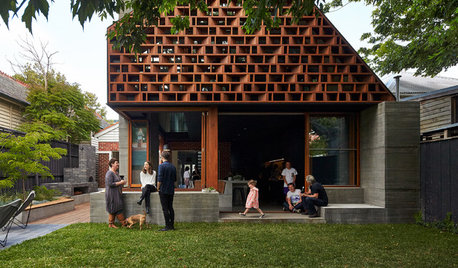
HOMES AROUND THE WORLDHouzz Tour: Local Cafe Culture Inspires a Melbourne Makeover
An Australian family renovates its bungalow to connect with relatives, friends and community
Full Story
BUDGET DECORATINGPop Culture Watch: Get a Good Rap With Thrift Store Scores
Eight rooms that rock secondhand finds, in an ideabook inspired by rappers taking YouTube by storm
Full Story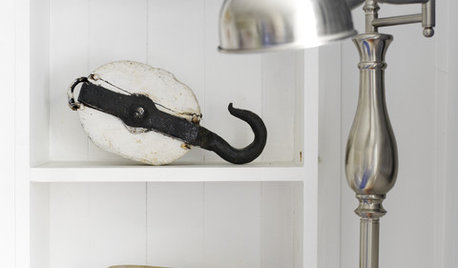
HOUZZ TOURSHouzz Tour: Cultural Adventure in Newfoundland
Lovingly renovated coastal cottages enhance a trip of a lifetime
Full Story
DECORATING GUIDESPop Culture Watch: 12 Home Trends from the '80s Are Back
Hold on to your hat (over your humongous hair); interior design elements of the 1980s have shot forward to today, in updated fashion
Full Story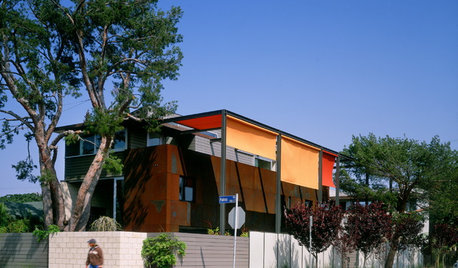
REMODELING GUIDESInteresting Industrial Materials: Cor-Ten Steel
Use the Rust-Rich Metal for a Variety of Exterior Applications
Full Story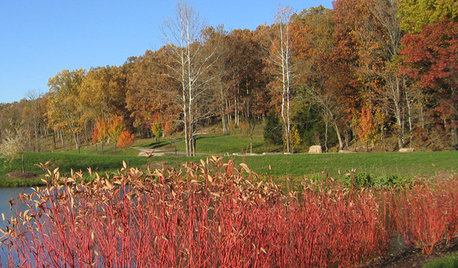
GARDENING GUIDESThese Hedges Can Add Interest to Your Winter Garden
Evergreen trees and shrubs provide structure and color in the winter months — and can attract wildlife too
Full Story
LIGHTINGMix Your Lamp Styles for Major Interest
Unpair those light fixtures for unrivaled personality and appeal. Here’s how to do it right
Full Story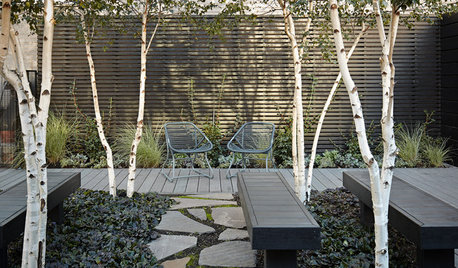
GARDENING GUIDESBest Barks and Berries for Winter Interest
Brighten winter gardens with trees and shrubs chosen for colorful berries and beautiful branches
Full StorySponsored
More Discussions



haweha